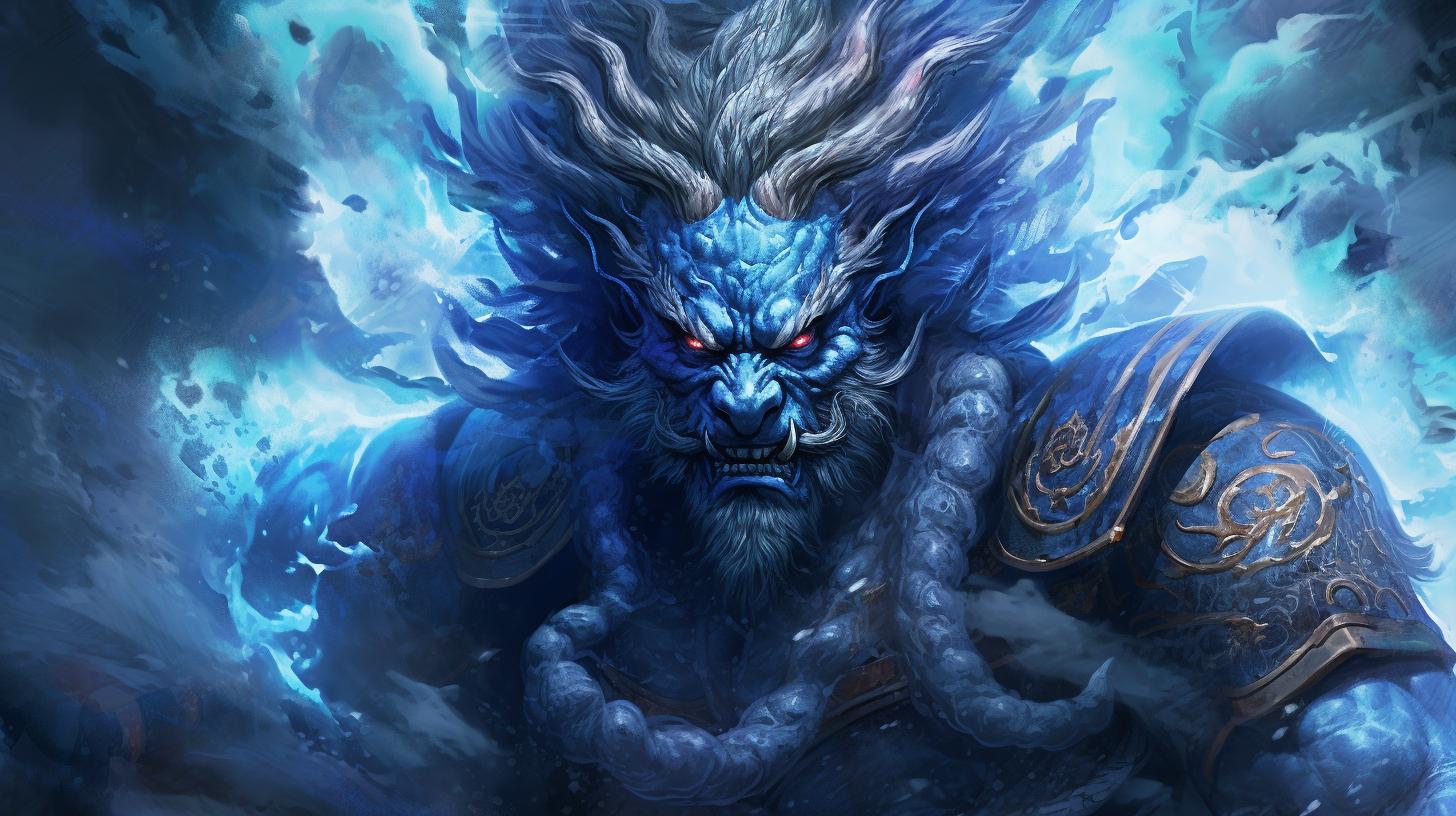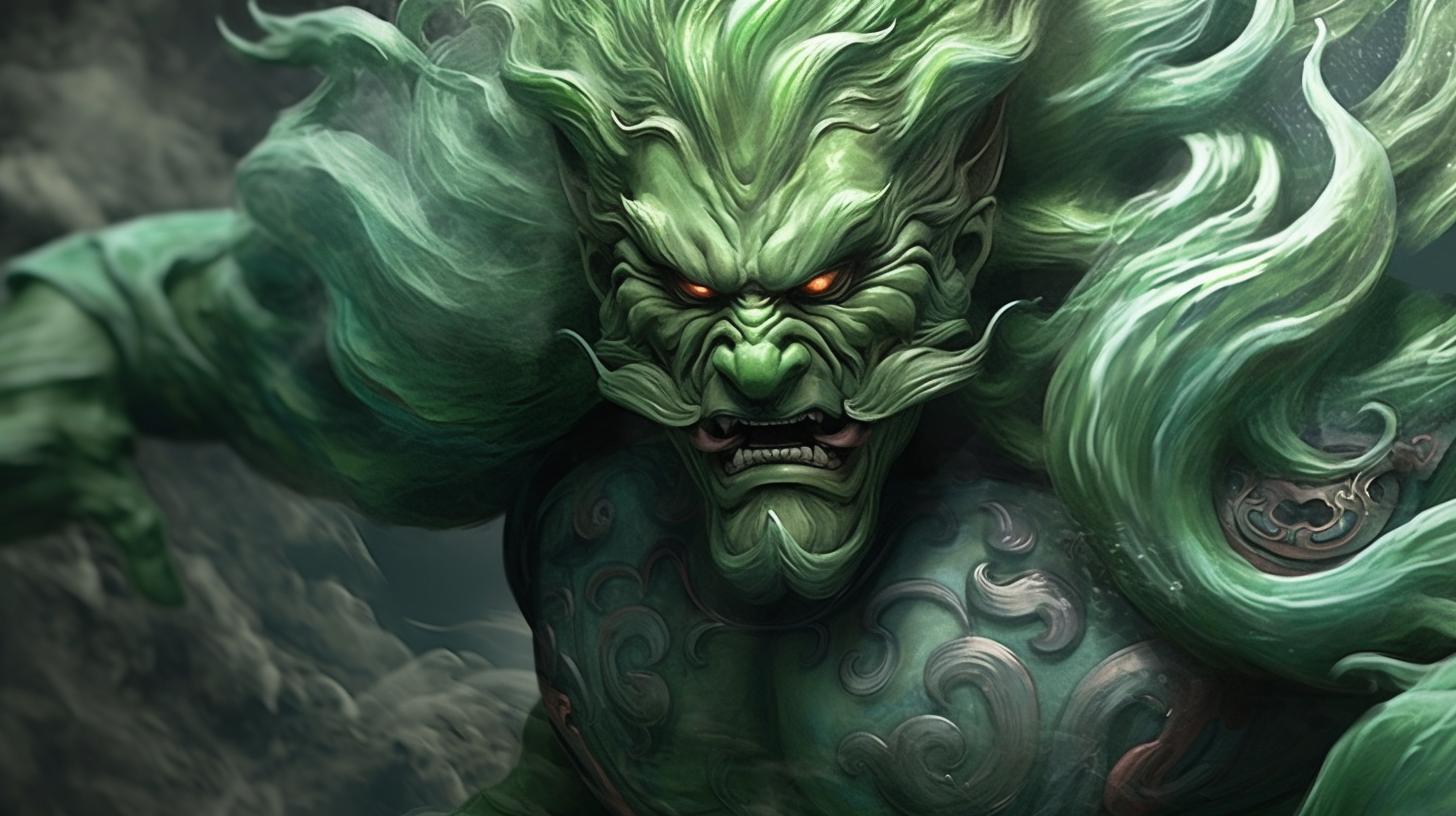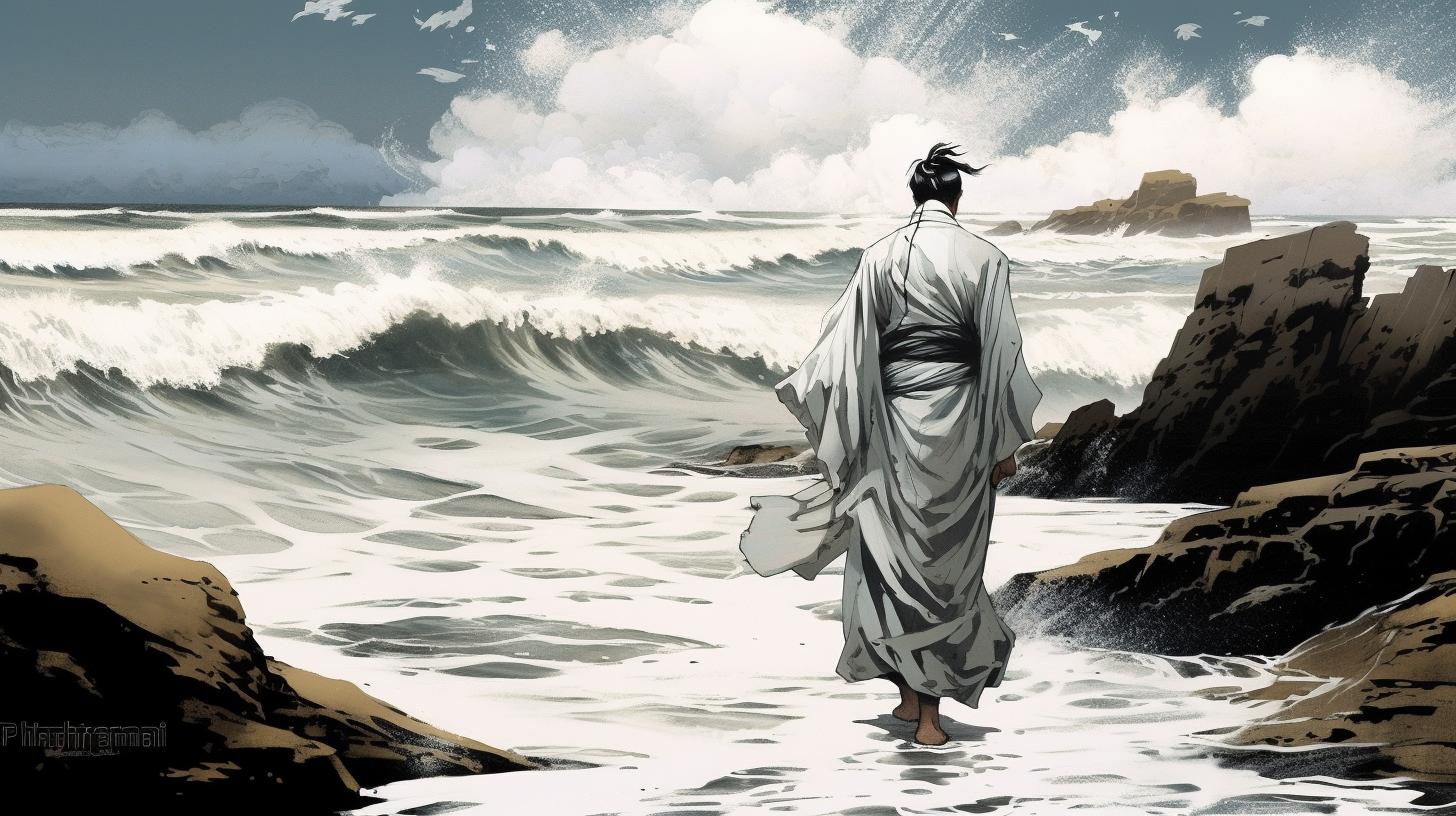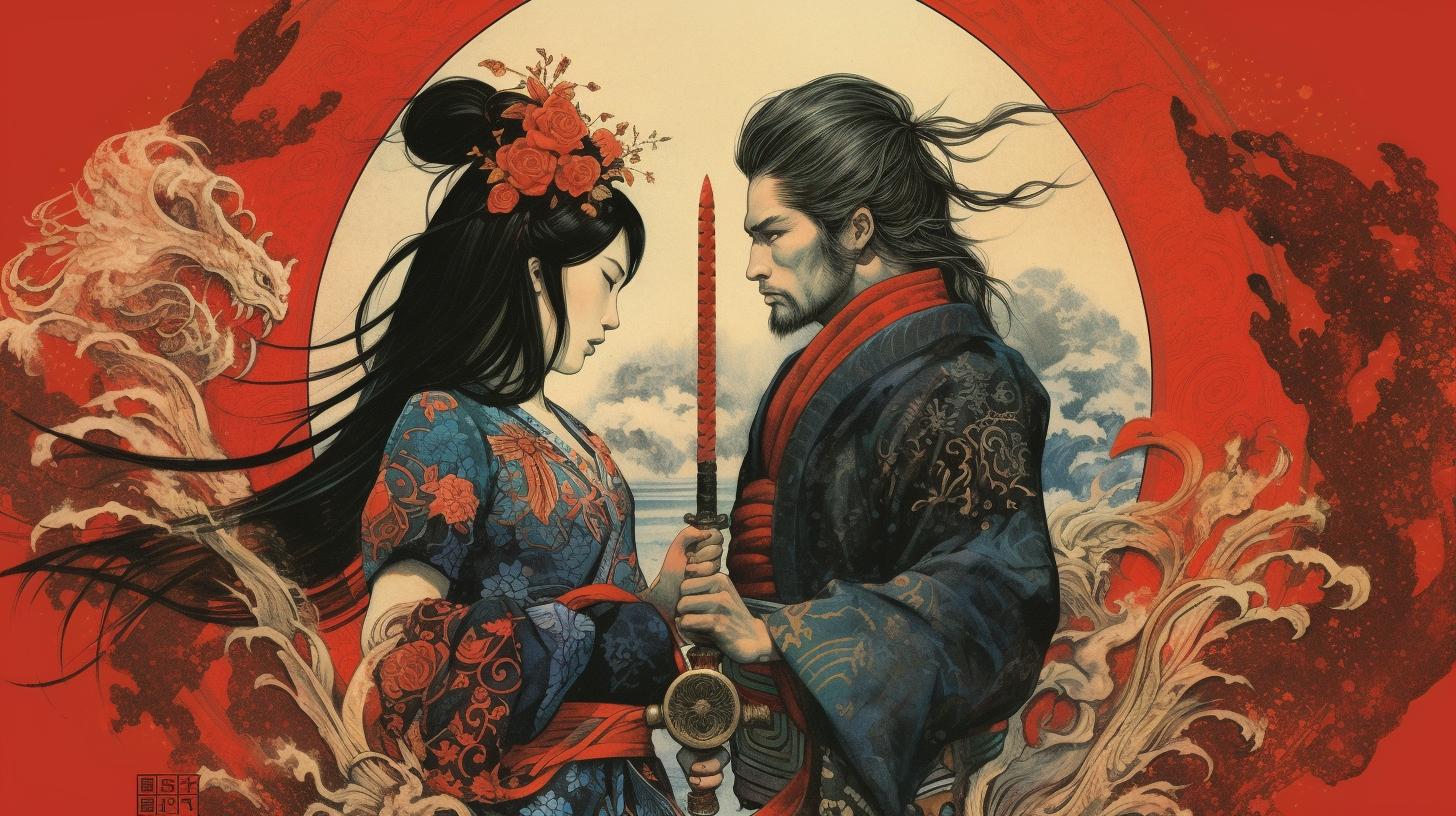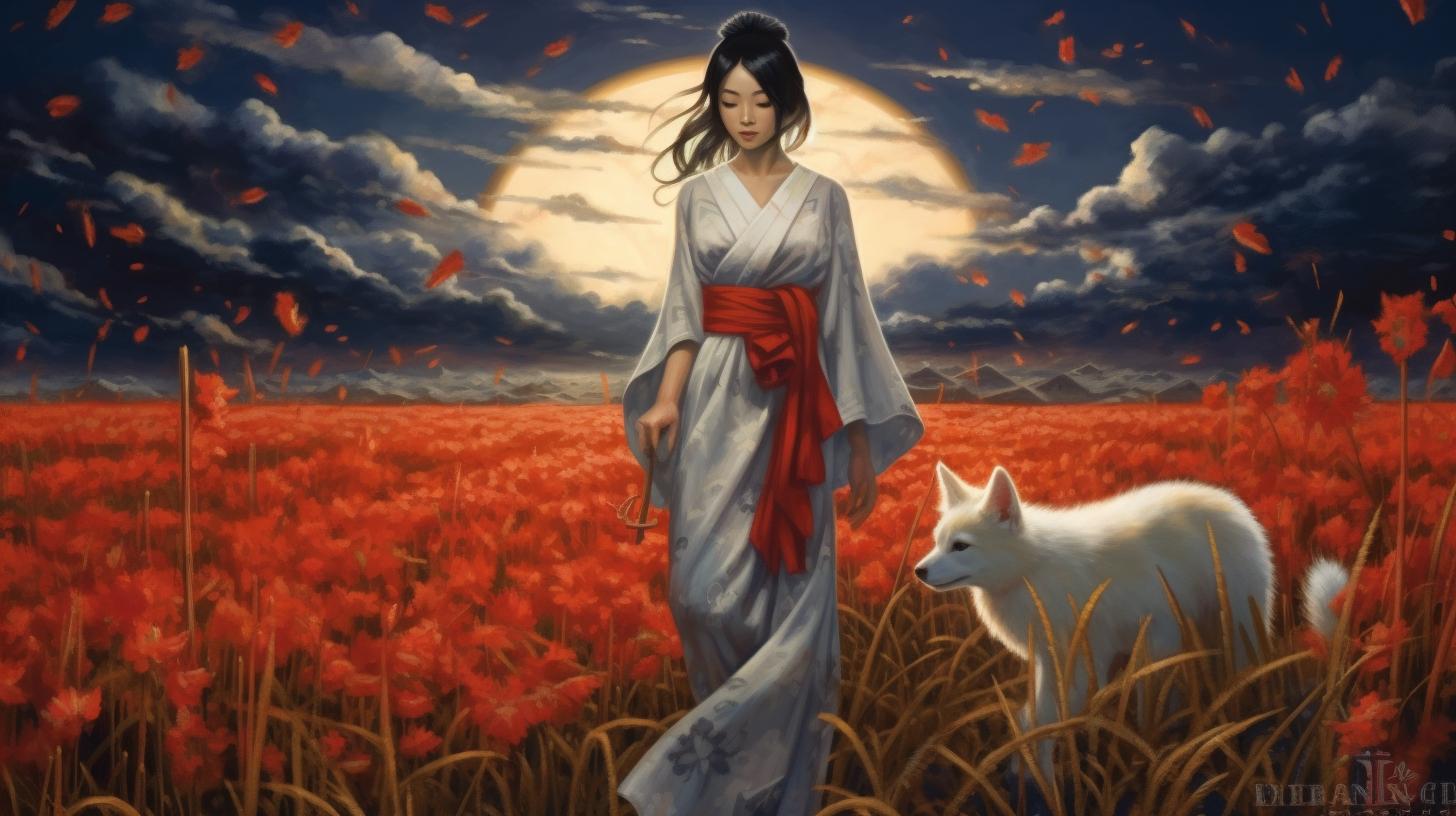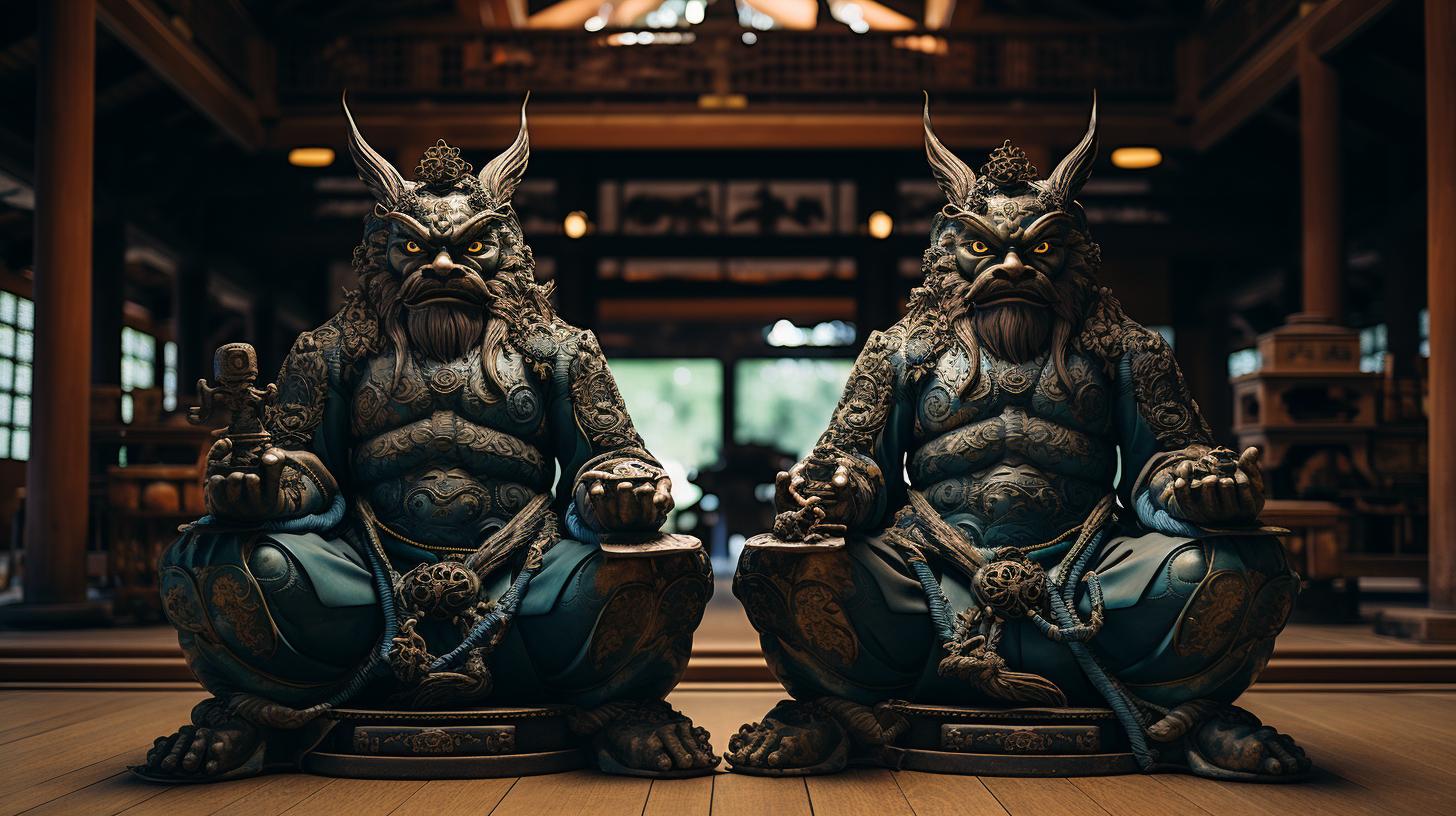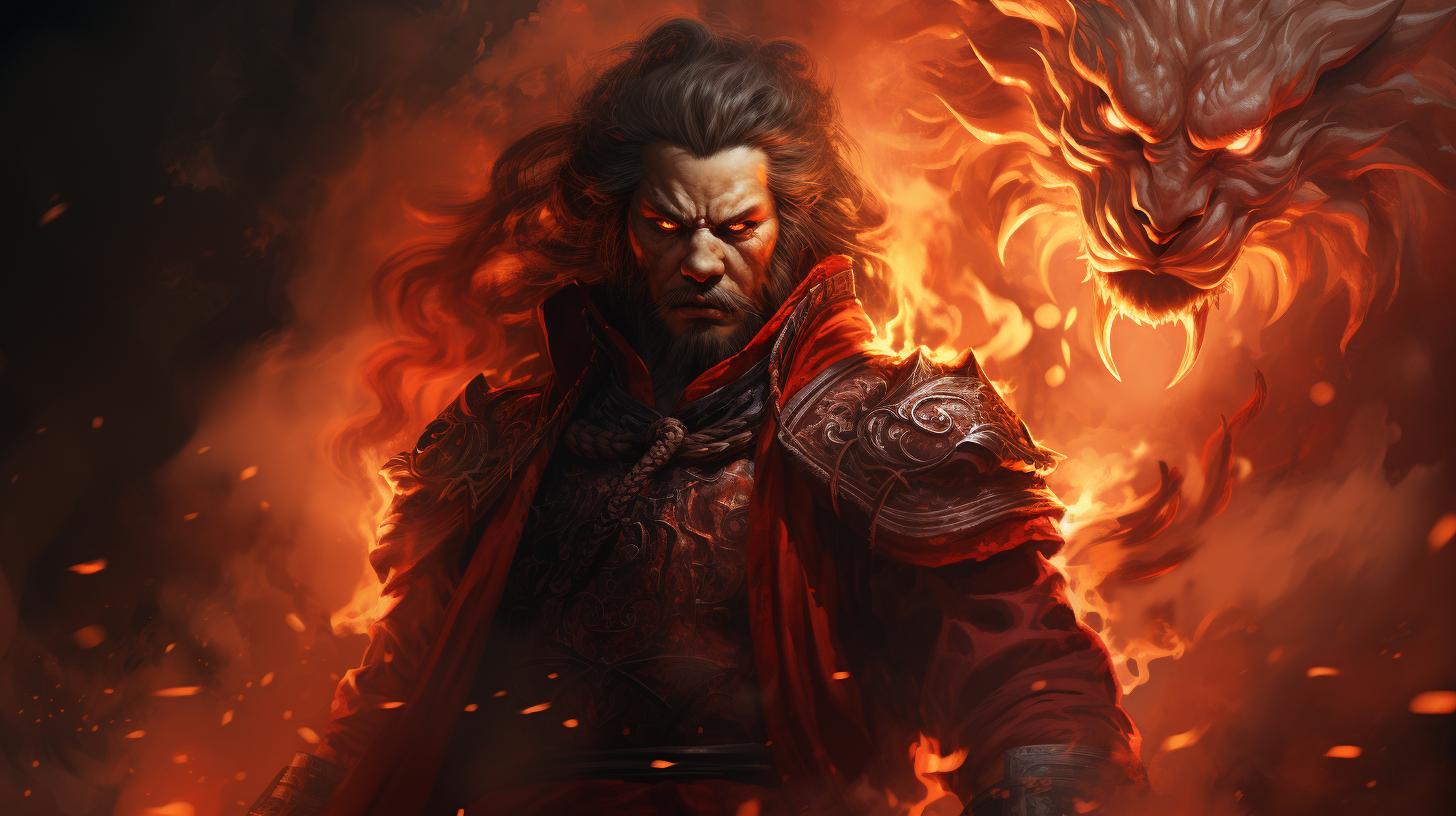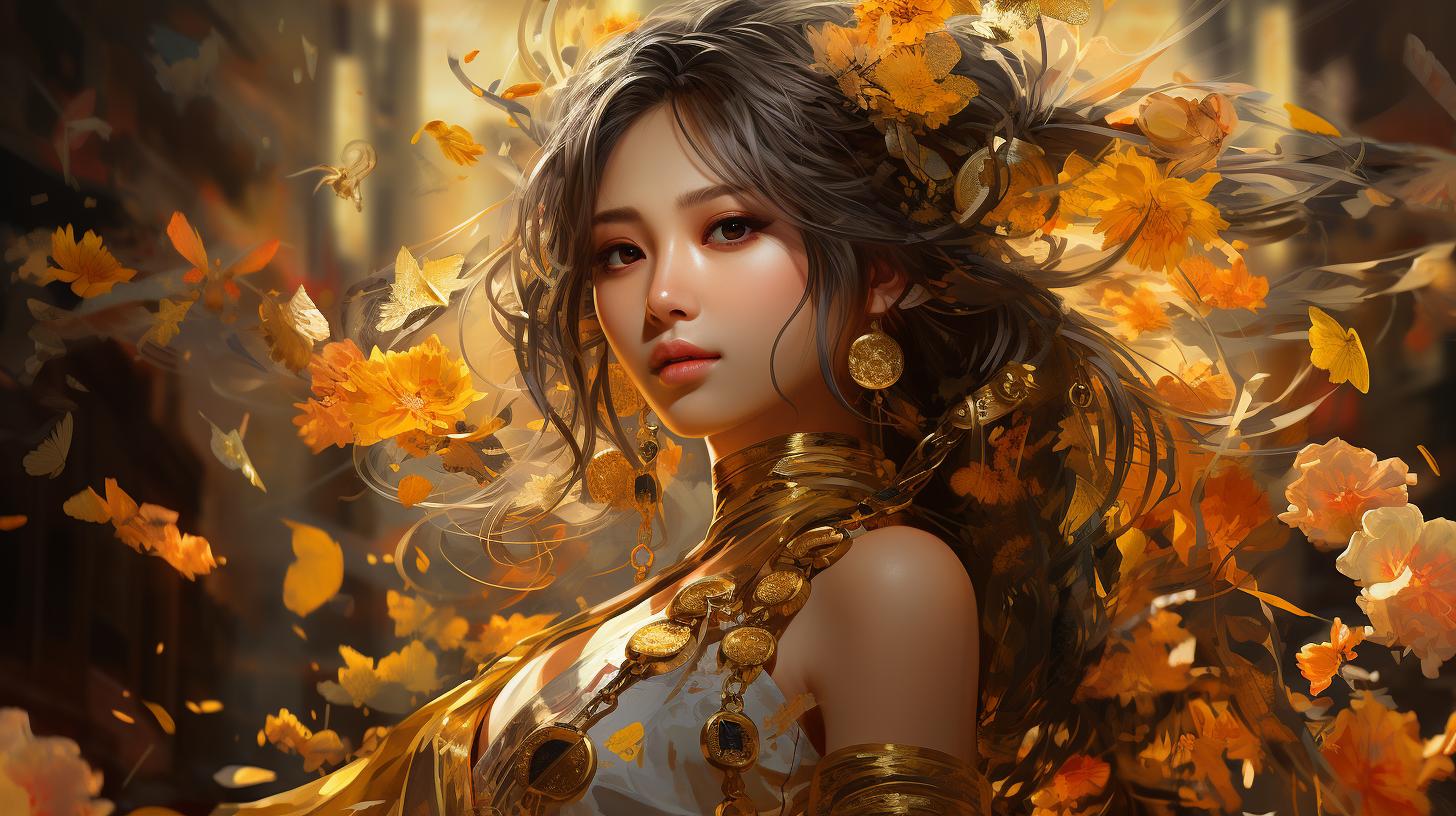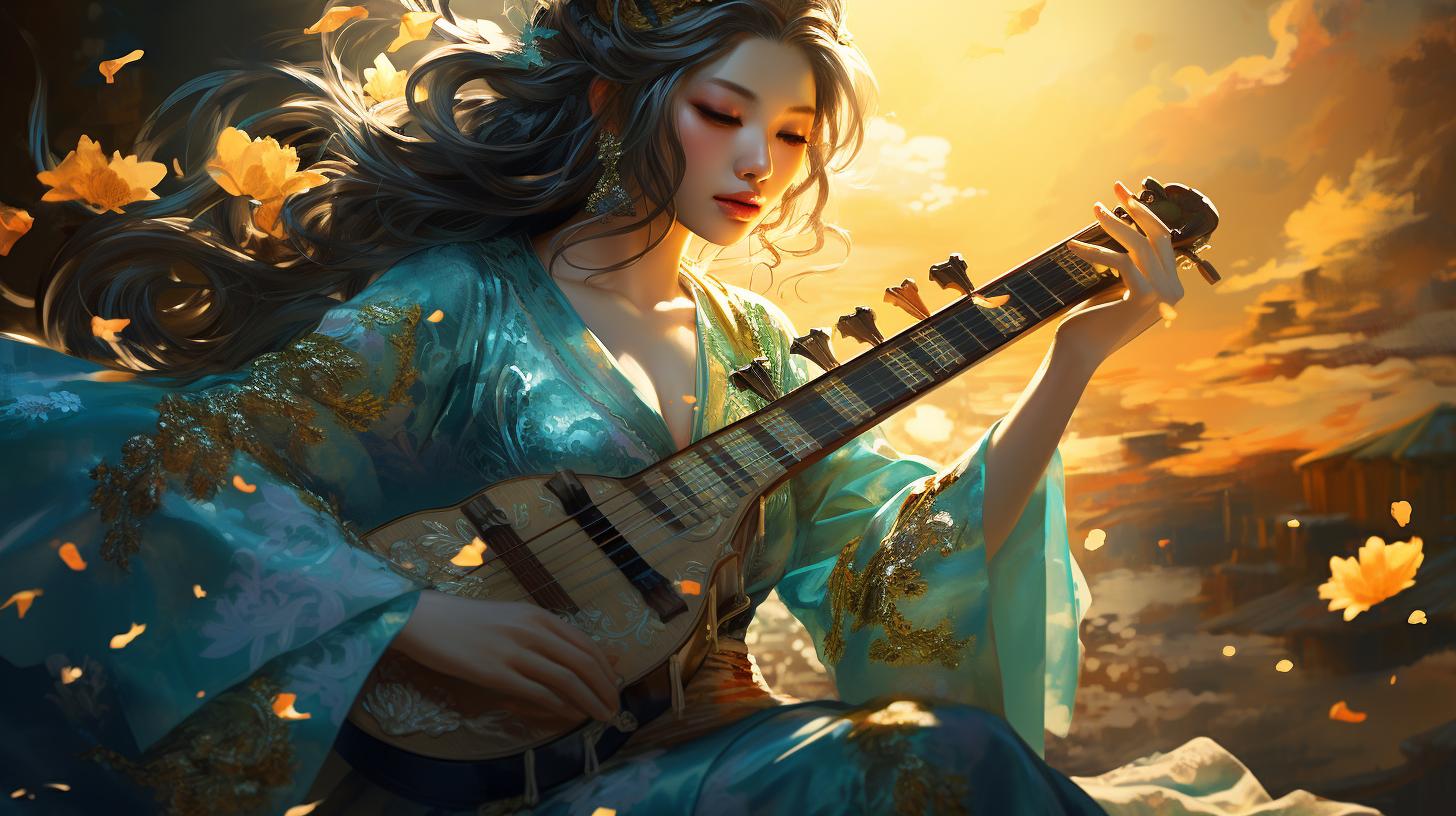Raijin God of Thunder: Unveiling the Myths and Legends
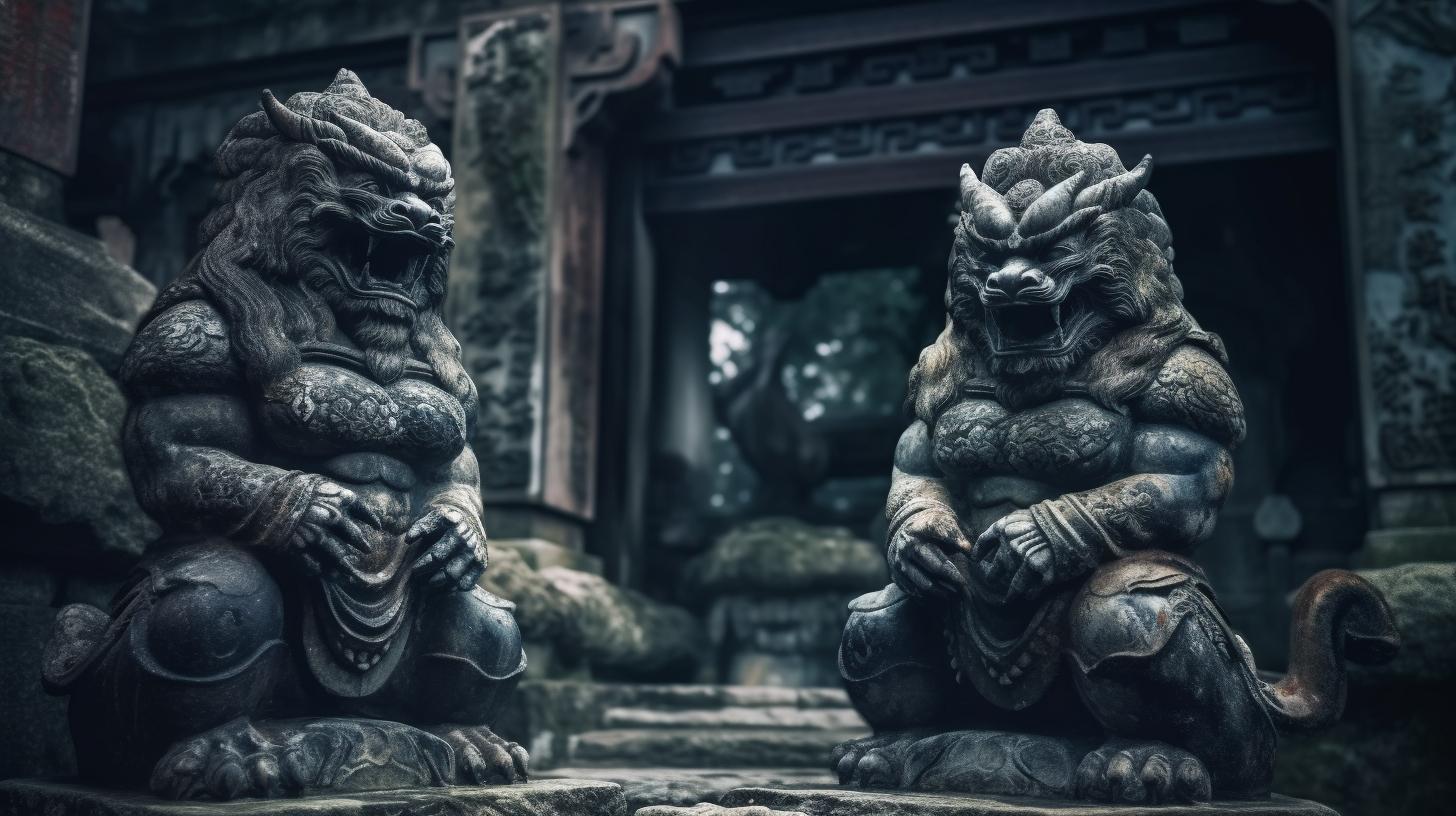
‘Raijin God of Thunder: Unveiling the Myths and Legends’
Raijin God of Thunder is a powerful figure in Japanese mythology, known for his ability to summon thunderstorms and rain. With origins in Shintoism, Raijin is often portrayed as a fearsome demon, a testament to his immense power and importance.
Accompanying him is Fujin, the god of the wind, together they form an indomitable force of nature. Raijin’s power was even believed to have protected Japan from a Mongol invasion in the thirteenth century, when a typhoon called Kamikaze thwarted the invading forces.
Despite his terrifying appearance, Raijin has played an important role in Japanese history and culture, inspiring art, literature and even modern-day videogames. In this article, we will explore the myths and legends surrounding Raijin, his role in Japanese history, and his enduring legacy in Japanese culture.
Origins of Raijin God of Thunder
Shinto Origins
Raijin God of Thunder has roots in Shintoism, the oldest religion in Japan. Shintoism focuses on the worship of kami, which are spirits that inhabit all things, including natural elements such as thunder and rain, and human-made objects such as tools and buildings.
Raijin is one of the many kami worshipped in Shintoism, representing the powerful natural force of thunder.
Raijin’s Birth and Early Life
According to legend, Raijin was born when Izanami, the goddess of creation, gave birth to the god of fire, Kagutsuchi. Kagutsuchi‘s birth was so violent that he burned his mother to death, causing her to descend to the underworld.
This led to Izanagi, the god of creation and Izanami‘s husband, to search for her in Yomi, the land of the dead.
Raijin and Yomi, the Land of the Dead
While in Yomi, Izanagi encountered various deities, including Raijin, who was a god of natural phenomena. His presence in the underworld shows his connection with the forces of death and destruction, especially since Yomi was known to be a place of darkness and decay.
However, Raijin’s role in the underworld also highlights his power and influence over all aspects of nature, not just thunder and lightning. In conclusion, Raijin God of Thunder has deep roots in Shintoism and is associated with the powerful natural force of thunder.
His origins are tied to the creation myth in Japanese mythology and his presence in the underworld reflects his connection to the forces of death and destruction. Raijin’s importance in Japanese culture is reflected in his continued worship at temples and shrines throughout Japan.
Raijin and Fujin, the Gods of Thunder and Wind
Depictions of Raijin and Fujin
Raijin and Fujin are often depicted together in Japanese art and mythology. Raijin is portrayed as a fearsome demon, with a muscular body and a fierce expression. He often wears animal skins and carries a large drum that he beats to summon thunderstorms.
Fujin, on the other hand, is depicted with wild, green hair and a windbag on his back that he uses to control the winds. He is often shown blowing wind, or with his mouth open in a fierce expression.
The Roles of Raijin and Fujin in Japanese Mythology
In Japanese mythology, Raijin and Fujin are revered as powerful deities associated with natural phenomena. Raijin is the god of thunder, storms, and rain, while Fujin is the god of wind.
According to legend, Raijin was born from the god Izanami‘s body, while Fujin was born from the god Izanagi‘s breath. Together, Raijin and Fujin were responsible for controlling the elements and maintaining the balance of nature.
In Japanese mythology, Raijin was often seen as a fierce and powerful god, capable of summoning storms with his thunderbolts and drums. His power was feared by many, but also respected for its ability to protect Japan from invasion and other disasters.
Fujin, meanwhile, was often seen as a more mischievous figure, blowing winds that could either aid or hinder Japan’s sailors and farmers.
Raijin and Fujin in Japanese Culture
Raijin and Fujin have had a significant impact on Japanese culture throughout history. Their depictions in art and literature are widespread, and they have been featured in everything from ancient woodblock prints to modern-day manga and anime.
Raijin’s thunderbolts and drums have also been used as symbols of power and resilience, and are often incorporated into Japanese military and political iconography. In modern times, Raijin and Fujin continue to be revered at temples and shrines throughout Japan.
Many Japanese people still believe in their power to control the elements and protect the country from disasters. Overall, Raijin and Fujin are important symbols of Japan’s connection to nature and its ability to overcome challenges through the power of the elements.
Raijin’s Powers and Depictions
Raijin’s Thunderbolts and Drums
Raijin’s primary power is control over thunderstorms. He is depicted as wielding a pair of drums called “taiko,” which he uses to create thunder. These drums are symbolic of Raijin’s ability to create storms and to warn the people of their arrival.
Apart from that, he is also known to have the ability to control the growth and movement of trees, specifically their branches and roots.
Raijin’s Associations with Lightning
Lightning is another natural phenomenon strongly associated with Raijin and his powers. He is commonly depicted as holding bolts of lightning, which he can hurl at his enemies. In Japanese mythology, lightning was seen as a weapon of the gods, and Raijin is often portrayed with lightning bolts to emphasize his divine power.
Raijin’s Depiction as a Demon
In Japanese mythology, demons are not necessarily considered evil. They are often beings of great power, and Raijin’s ferocious appearance is not meant to depict him as evil or malevolent.
Rather, his demon-like appearance is intended to convey his immense power and intense energy. Raijin is often depicted with a fierce expression, sharp fangs, a muscular body, and an array of horns and spikes protruding from his head.
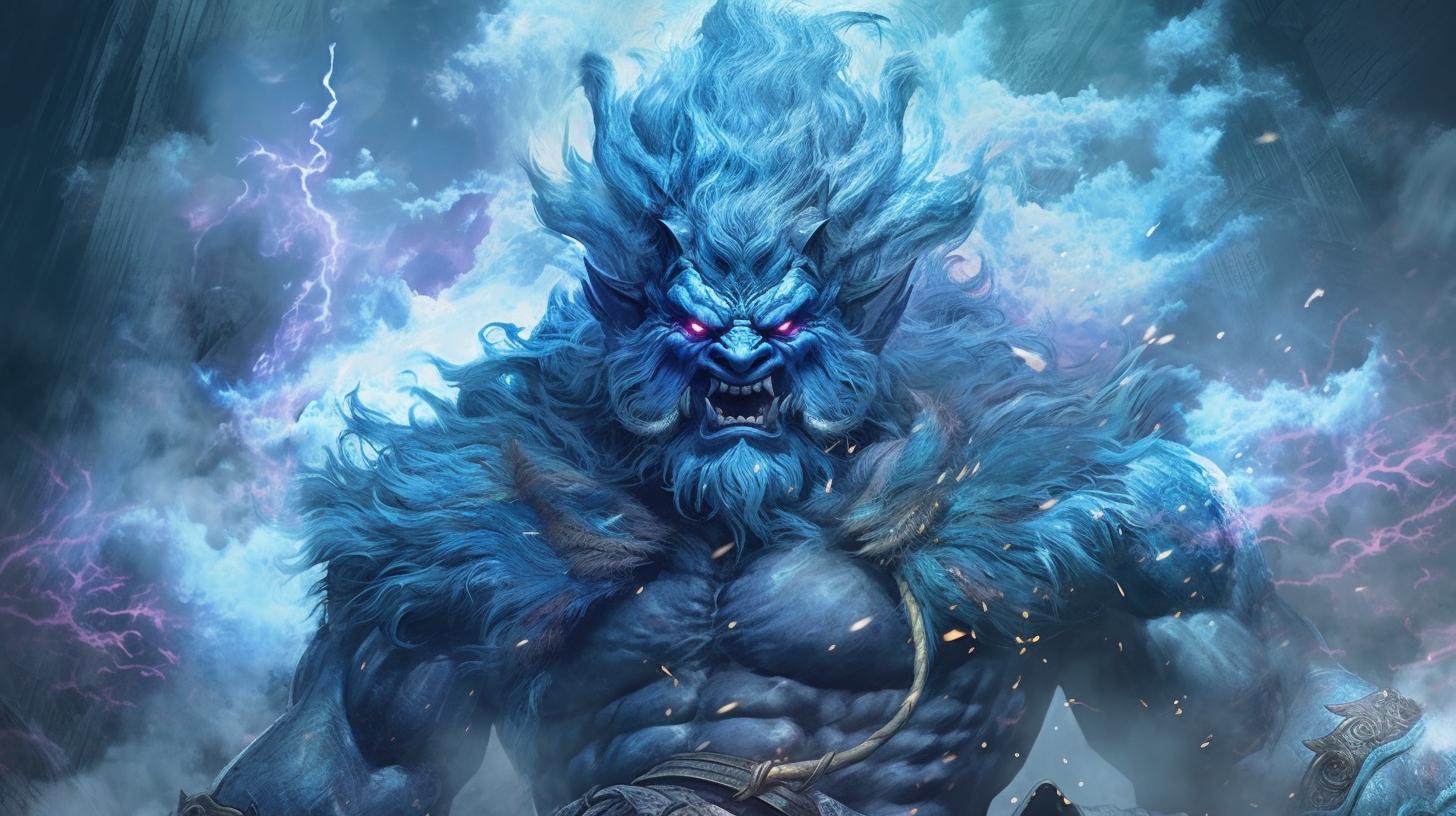
His overall appearance is both terrifying and awe-inspiring. This depiction underscores the fact that Raijin is a god of destruction as well as creation.
Raijin’s Importance in Japanese History
Raijin’s Role in the Kamikaze
Legend has it that during the Mongol invasion in 1274, the Japanese prayed to Raijin and Fujin to protect them from the enemy. Raijin answered their prayers by unleashing a massive storm that sank the enemy ships, an event later known as the Kamikaze (divine wind).
This divine intervention had a profound impact on Japanese history and was seen as a sign of the gods’ favor towards Japan.
Raijin’s Influence on Japanese Military History
Raijin’s association with thunder and lightning made him a popular symbol for Japanese military leaders, who saw him as an embodiment of power and strength. During the Edo period (1603-1868), samurai warriors often wore Raijin symbols on their armor or carried them as banners during battles.
The symbol served as a reminder of Raijin’s power to inspire and protect warriors in battle.
Raijin and the Emperor
Raijin’s influence extended even to the highest levels of Japanese society, as the emperor was considered a descendant of Raijin and Fujin. As a symbol of divine protection, Raijin’s image was often featured in imperial artwork and played a major role in ceremonies such as the emperor’s enthronement.
Overall, Raijin’s importance in Japanese history cannot be overstated. From his role in protecting Japan from invading forces to his symbolic significance in military and imperial contexts, Raijin has left an indelible mark on Japanese culture that endures to this day.
The Legacy of Raijin God of Thunder
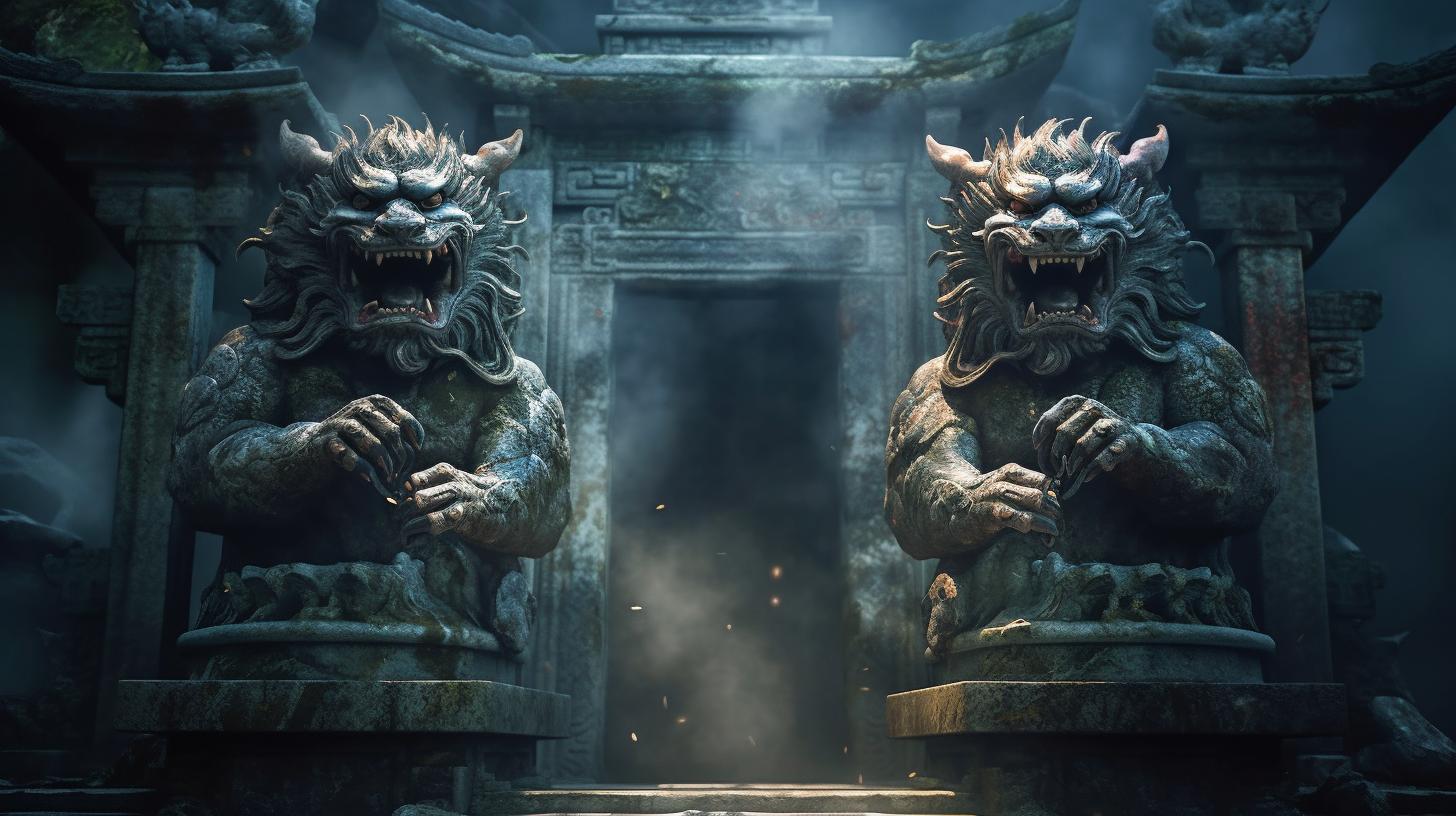
Raijin in Japanese Art and Culture
Raijin has been a popular subject in Japanese art and culture throughout history. His fearsome appearance and powerful status make him a compelling figure to depict in visual media. Raijin has been depicted in various forms, from traditional Ukiyo-e prints to modern-day manga and anime.
In traditional Japanese art, Raijin is often shown wielding his drums or holding thunderbolts. He is sometimes depicted alongside Fujin, emphasizing their connection as gods of wind and thunder. Raijin has also been carved into temple and shrine architecture, where he stands guard against evil spirits with his powerful presence.
In modern Japanese culture, Raijin remains a popular figure, appearing in video games, television shows, and movies. Many Japanese towns and cities hold Matsuri festivals that celebrate the gods of thunder and wind, with Raijin often taking a central role in the festivities.
Raijin in Popular Culture
Raijin’s influence on popular culture extends beyond Japan. In video games, Raijin has appeared in popular titles such as Final Fantasy and Smite. In music, Raijin has been referenced in songs by bands such as The Smashing Pumpkins and Red Hot Chili Peppers.
Raijin has also made appearances in Hollywood films, such as the 2014 movie “Godzilla.” In the film, Raijin is depicted as a giant monster that wreaks havoc on a North American city.
The Continued Worship of Raijin at Temples and Shrines
Despite Raijin’s popularity in pop culture, he remains an important figure in traditional Japanese religion. Raijin is still worshipped at many temples and shrines throughout Japan, where he is revered for his ability to bring rain and protect against evil spirits.
Visitors to these temples and shrines can often see elaborate statues and carvings of Raijin, depicting him in various poses. Many Japanese people still pray to Raijin for good weather and protection from natural disasters.
Overall, Raijin’s legacy remains strong in both traditional Japanese culture and modern pop culture. With his fearsome image and powerful role in Japanese mythology, Raijin continues to capture the imaginations of people around the world.
Family and Connections of Raijin God of Thunder
The Relationship Between Raijin and Fujin
Raijin and Fujin often appear together in Japanese mythology and artwork as the gods of thunder and wind, respectively. While they are often seen as complementary forces of nature, they also have a complex relationship that reflects their opposing powers.
Raijin’s thunderbolts and drums represent his power and authority, while Fujin’s winds bring change and movement. Despite their differences, Raijin and Fujin are often depicted as working together to create the weather that affects Japan.
Raijin’s Family and Connections to Other Deities
Raijin is one of the many gods in the Japanese pantheon, and as such, he has several connections to other deities. His close relationship with his brother, Hayagriva, is particularly notable, as the two gods are often depicted together in artwork and are associated with the protection of Buddhism.
Additionally, Raijin’s powers over storms and weather often put him in conflict with other gods, such as the sea goddess, Ryujin. Nevertheless, Raijin is recognized as an important and powerful figure in Japanese mythology and continues to be worshipped today at temples and shrines across the country.
Interpretations and Misconceptions of Raijin God of Thunder
Misunderstandings of Raijin’s Demon-like Appearance
Despite Raijin’s essential role in Japanese mythology, his fearsome appearance had led to misconceptions about his character. Raijin is often depicted in Japanese art as a fierce, demonic figure, complete with horns, sharp teeth, and bulging, angry eyes.
These features contribute to the perception of Raijin as a malevolent deity. However, the demon-like quality of Raijin’s appearance is not meant to be taken literally. Instead, it serves as a representation of the awe-inspiring power that the god of thunder has over nature.
In Japanese mythology, Raijin’s thunderbolts and drums are indispensable tools in controlling the weather. They can bring life-sustaining rain to parched crops as well as destructive storms that wreak havoc on communities.
Thus, Raijin’s appearance channels the dual nature of his power: it can be a force of good or ill depending on how it is wielded. Despite his fearsome visage, Raijin is an important figure in Japanese culture and has been revered for centuries as an essential deity.
Modern Interpretations of Raijin in Japanese Culture
Today, Raijin’s image has not lost its appeal, and he is widely featured in Japanese pop culture. He has become a fixture in manga and anime and is popular among videogame enthusiasts as well.
Japan-based game company Final Fantasy has featured Raijin and Fujin as characters in some of its titles. Additionally, modern artists have incorporated Raijin into various works of art. Whether it is in the form of contemporary sculptures or illustrations, Raijin’s enduring cultural significance is undeniable.
Religious ceremonies and festivals that include Raijin remain important in Japan as well. Despite their secular presentation, these events offer daily reminders of Japan’s ancient spiritual roots. They also highlight the importance of balance in life, which is well-reflected in Raijin’s dual nature.
As the clash between old and new continues to shape Japanese culture, the significance of deities like Raijin remains a topic of ongoing discussion among scholars and the Japanese populace.
Summary
Misunderstandings about Raijin’s demon-like appearance have led to misconceptions about his character. Raijin’s fearsome appearance is a representation of the awe-inspiring power he has over nature. Despite his appearance, Raijin has been revered for centuries and is an essential deity in Japanese culture.
Today, he remains an essential element of Japanese pop culture and is widely featured in manga and anime. Relgious ceremonies and festivals featuring Raijin are still important in Japan, offering daily reminders of the country’s ancient spiritual roots and the importance of balance in life.

